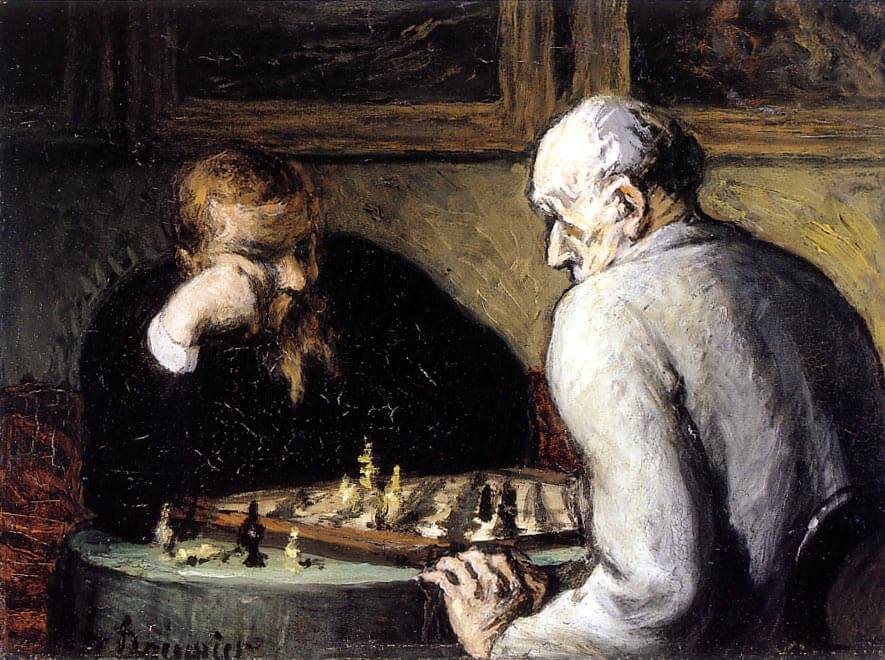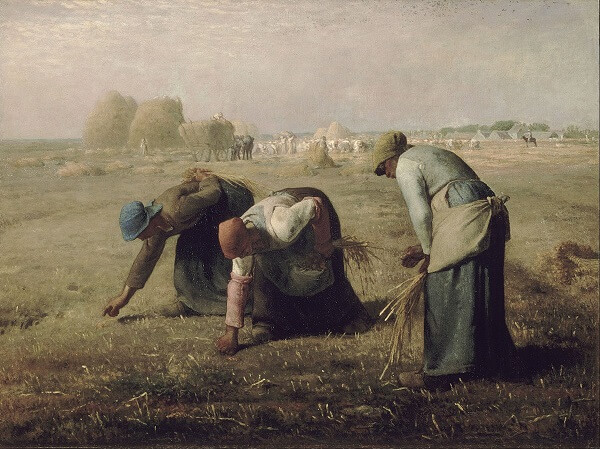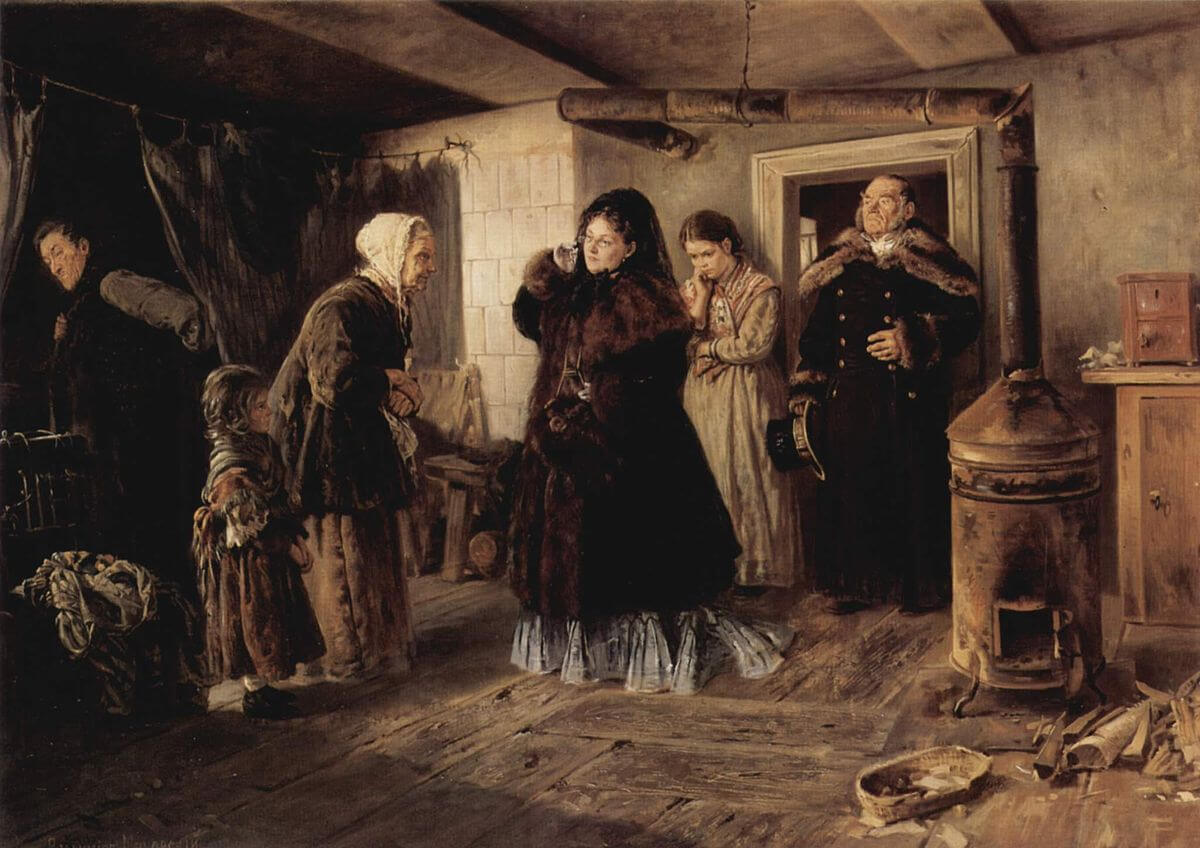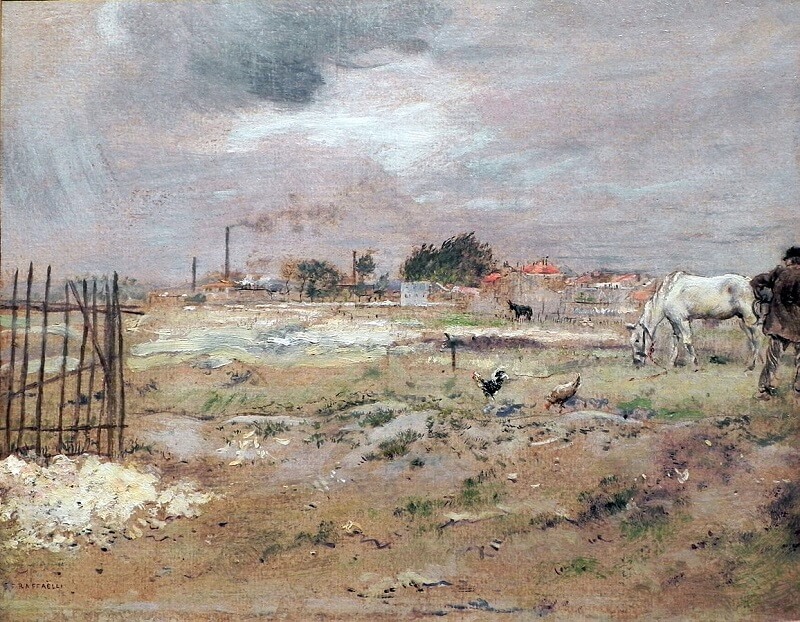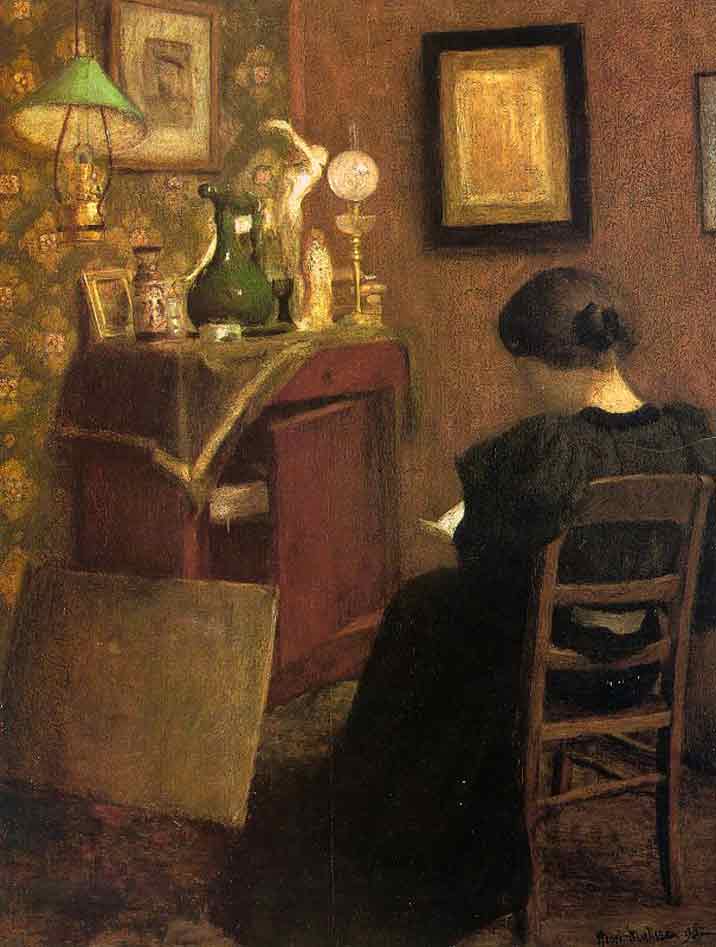Activity 1: Can You Find It?
Find the following in the artwork:
- Nape
- Clutter
- Someone Transported
- Green Vase
- Something That can be Lit
- Something Resting on the Floor
- Something Open
- Something Askew
Activity 2: Narrate the Artwork
- After studying the artwork, narrate the scene shown aloud using your own words.
Activity 3: Classify the Artwork
- This artwork belongs to the Realist art movement.
- Find Realism on the timeline.
- During which (estimated) years did Realism flourish?
- Which art movement preceded Realism?
- Which art movement followed Realism?
Activity 4: Recreate the Artwork

- Click the crayon above and complete page 31 of 'Fourth Grade Art History Coloring Book.'
